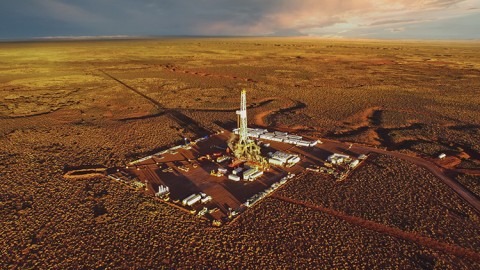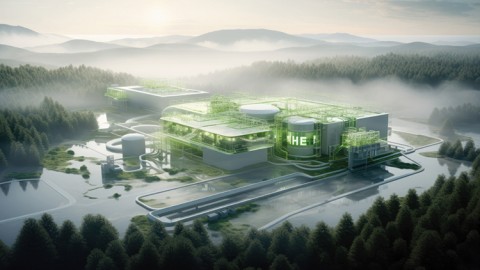To begin with, oil and gas products are now the primary source of hydrogen creation, and the production of green hydrogen is costly. Hydrogen is known to be a fluid energy carrier, according to the International Energy Agency (IEA), with an extensive variety of uses in industries like transportation and manufacturing.
It is able to be made in several methods. One technique is electrolysis, which involves dividing water into hydrogen and oxygen through an electric current. This method is referred to as green or renewable hydrogen if the energy utilized in it originates from renewable resources like solar or wind power.
General Overview
Green hydrogen, which is created by electrolyzing sources of clean energy instead of petroleum or coal, is seen as being crucial to hastening the worldwide green transformation. Green hydrogen is a flexible carrier that may be utilized in numerous capacities such as fuel for vehicles, in contrast to wind or solar electricity. Even though fossil fuels are now used to manufacture the majority of hydrogen, favorable government regulations and increasing demands on energy firms to decarbonize are predicted to cause a surge in the production of green hydrogen in the years to come.
Authorities and energy corporations need to be ready for a sharp increase in output over the months to come and make certain they’re equipped with the necessary infrastructure for moving green hydrogen, as it becomes an increasingly significant clean energy option. Significant hydrogen corridors have already been established worldwide, such as the European connection between Spain and the Netherlands. It will not be long before Egypt initiates a similar set of procedures to ensure its position as a regional energy hub. Long-term cost and time savings for businesses could result from adopting recent advances in natural gas technology to hydrogen transportation, which would also facilitate the shift from fossil fuels to renewable energy sources.
The Transition
Utilizing already-existing pipelines can lower the cost of transporting hydrogen; however, pipelines must be evaluated to determine whether they are suitable for this purpose, taking into consideration factors like deterioration, maintenance, detection of leaks, the impact of hydrogen on pipeline resources as well as consumers, and gas flow measurement.
Gas pipelines might be used to carry hydrogen, an idea that is gaining popularity as more governments speed up plans to expand infrastructure and natural gas production. This is evident in the United States, where a multitude of facilities are part of a contentious LNG project pipeline. In addition, Canada is building its first LNG transport facility in response to years of demand from the energy industry.
In order to facilitate intermediate energy security while advancing toward a green transition, a number of innovative natural gas facilities are being built. In light of the anticipated sharp increase in the need for green hydrogen during the coming years, numerous businesses worldwide have announced plans to expand their production of the gas during the course of the next ten years. In order to conserve both time and funds later on and to further promote the green transition, energy businesses and governments should take advantage of this chance and construct pipelines that might be utilized for the transportation of both natural gas and green hydrogen.
The Transition Phase
The bulk of hydrogen generated today, globally, comes from steam methane transforming, an established method of producing hydrogen from a methane source, like natural gas, by using high temperatures in the steam. The natural gas revamping procedure discharges a significant amount of carbon into the environment if carbon capture technology is not used. Companies must address the greenhouse gas emissions from this manufacturing route in order to make hydrogen environmentally friendly. For sectors implementing an alternative energy plan these days and creating long-term sustainable alternatives for the next day, this is an essential aspect of the picture.
Three stages make up the steam methane transforming method. Firstly, hydrogen, carbon monoxide, and small amounts of carbon dioxide are produced by the reaction of natural gas with steam, pressure, and a catalyst. The steam and carbon monoxide combine with a catalyst in the following stage to produce more hydrogen and carbon dioxide. The carbon dioxide and other impurities are eliminated in the last stage, which produces pure hydrogen.
Alternative energy can be implemented in a number of ways as more hydrogen becomes available in the sector. In addition to lowering overall greenhouse gas emissions, the use of blue hydrogen offers a chance to take advantage of important energy and infrastructure resources, such as natural gas pipelines and oil and gas products.
In conclusion, the transition to clean and alternative energy sources being implemented into natural gas infrastructure is slowly turning into reality. This goal is not far from being accomplished and will soon be able to blend into a more sustainable future within the industry.








